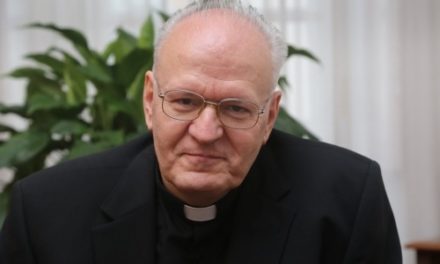In 2020, the only male monastic order founded in Hungary and still operating, the Pauline Order, commemorated the 750th anniversary of the death of its founder. The Hungarian National Museum's temporary exhibition opening on June 15 presents their work.
The hermit life in Hungary, which became popular in the 1220s, Boldog Özséb , the Pilis hermit who became a canon of Esztergom. The Pauline order was founded in the territory of the Kingdom of Hungary around 1250. Its development was continuous until the late Middle Ages, in fact, from the 15th century, it set foot not only in Central Europe, but also in Rome and other corners of Europe. Pauline monks are present in sixteen countries, with a number of nearly half a thousand, on four continents
The exhibition opening in the Hungarian National Museum aims to give a comprehensive picture of the past, present and prospects of the monastic order that once started on Hungarian soil. Among the objects on display will be archaeological findings from monasteries in the Carpathian Basin, domestic and foreign codices preserving medieval, Pauline-related literary relics, gold and silver liturgical objects, early modern prints, numerous statues, paintings and engravings, which bear witness to the rich heritage of the order. .
In Hungarian public discourse, the Pauline order is often referred to as "the only monastic order founded in Hungary". For foreign countries (and not only Central Europeans), the figure of the Paulists has now merged with the częstochowa grace image, while the Hungarian origin of the order and the history of the Hungarian order's domain are little known. This is the image that the exhibition would like to paint for Hungarian and foreign visitors - primarily by presenting the life of the Paulists in the Kingdom of Hungary and in modern times, also shedding light on the historical role of the Polish center. The exhibition addresses all groups of secular and ecclesiastical society at the same time; provides basic information and points of interest even to those who have little or no knowledge of the Pauline Order.
The Paulists maintain five monasteries in the Hungarian province of the order (with a total of 18 order members), and these locations are centrally located in the exhibition as stops on a model railway running on a field table.
The model railway depicts the Black Madonna pilgrimage train, which leaves every year from Budapest to Częstochowa, the order's center in Poland, which symbolically connects the five Hungarian monasteries with the Jasna Góra monastery in Częstochowa. The exhibition begins with a medieval kerengő installation. The path then leads through a cave, from where the visitor can learn about the defining activities of the past 750-770 years: monastic life, farming, liturgical life and pastoral care. The content unit entitled "Deterioration and rebirth" refers to a sentence attributed (also) to Péter Pázmány, according to which Hungary rises and declines with the Paulists. In the next room, a part of the richly decorated Pauline library in Pest comes to life. At the exhibition, you can see outstanding, emblematic artefacts of the history of the Pauline order, such as the St. Pál the Hermit , the prayer book made by the Pauline monks for Benigna Magyar writers from Paul during the Baroque period, among them Gergely Gyöngyösi, György Fráter, Benedek Virág or Ferenc Vezér . The additional content (videos, music and texts) can be viewed via QR codes and on the tablets on site.
According to the plans, the exhibition will be enriched by subjective guided tours led by members of the Pauline Order and people close to the order. An art historian and visual designer, a Pauline monk, musician and librarian transforms into an exhibition director in order to leave the usual museological point of view and present the exhibition with personal stories. There will also be a surprise program at the Night of the Museums, and at the end of August a round table discussion will be organized with the participation of archaeologists, historians, art and literary historians.
about the programs on the website of the Hungarian National Museum.













